Non-performing loans: Are we aware of the real picture?

Based on repayment performance, a loan can be categorised as unclassified or classified. If a loan is paid back on time with interest, it is termed an unclassified or performing loan. When a loan is not repaid in full, it is called a classified or non-performing loan (NPL). NPLs can in turn be termed as sub-standard (SS), doubtful (DF) or bad/loss (BL), depending on the period for which it remains due. When a performing loan turns into an NPL, it is termed as SS, then to DF and lastly to BL, as the non-payment situation deteriorates. Hence, in a pool of classified loans, it is better to have a higher number of SS loans than DF or BL ones.
Managing NPLs in a country like Bangladesh is crucial because most financial assets are owned by commercial banks, and the country's economic growth is largely dependent on the flow of funds from the banking system. While NPL rates should not be more than two to three percent for a sustainable banking system, they are unusually high in Bangladesh. In 1991, the NPL rate stood at about 25 percent, which increased to nearly 35 percent in 2000 (State, Market and Society in an Emerging Economy, Chapter 10, Routledge). However, over the following two decades, the rate declined quite significantly. The NPL rate was 8.06 percent in 2020. Then it slightly reduced to 7.9 percent in 2021 before rising finally to nine percent in 2022. State-owned commercial banks (SCBs) and specialised banks (SBs) are mainly liable for such high NPL rates. For instance, against the overall NPL rate of nine percent in 2022, the rates were about 22 percent and 12 percent for SCBs and SBs, respectively. The volume of NPLs reached Tk 120,649 crore in 2022 without considering other distressed assets, according to the Bangladesh Bank.
The data on NPLs show that SS and DF loans declined over the 1994-2021 period, while the BL kept on rising, indicating that the quality of NPLs worsened. Of the total classified loans, the SS ones were 19 percent and DFs were 18 percent against the BLs of 63 percent in 1994. The rates of SS and DF loans declined dramatically to five percent and six percent, respectively, in 2000, whereas the BL loans increased abnormally to 89 percent. However, the SS and DF loans increased to 13 percent and eight percent, respectively, in 2010 with the corresponding fall of BL to 78 percent. In 2020, the SS and DF loans decreased noticeably to eight percent and five percent, respectively, with a corresponding rise of BL loans unusually to 87 percent. In 2021, the share of BLs in classified loans increased to 88 percent. SS and DF loans constituted about eight percent and four percent, respectively. The long-run increase of BL loans indicates that a major portion of the NPLs has not been performing for long. A question may naturally arise as to the destination of these BL loans.
The BL loans are buried under the technical name of loan write-off – meaning that a loan is no longer counted as an asset by the bank. Loans are written off to clear up the banks' balance sheets. Although loan write-off does not deny banks the right to recover money from the borrowers, the probability of collecting these loans is meagre.
In Bangladesh, a bank can write off a loan that has a minimum chance of recovery and has been classified as BL for at least three years. The bank must maintain 100 percent provision against that loan and has to file a lawsuit against the borrower. Available data shows that the amount of loan write-offs has been on a continuous rise over the 2003-2022 period. It was only Tk 3,700 crore in 2003, which jumped to Tk 17,400 crore in 2010. The figure again soared to Tk 43,200 crore in 2020, and finally leaped to Tk 60,400 crore in 2022.
The share of loan write-offs by bank types gives different pictures. The SCBs had the share of 31 percent in loan write-offs in 2003, which increased to 41 percent in 2010 and then rose largely to about 56 percent in 2015. It reduced to nearly 38 percent in 2022, however. The contribution of private commercial banks (PCBs) to loan write-offs was 34 percent in 2003, which increased to 40 percent in 2010. It rose marginally to 41 percent in 2015 and profoundly to about 60 percent in 2022. The SBs and foreign commercial banks (FCBs) had smaller contributions to the loan write-offs.
With NPLs only increasing, banks in Bangladesh have been facing tremendous pressure in terms of provision maintenance. There was a shortfall in maintaining provision almost every year between 1997 and 2022. Although there were ups and downs in the provision maintenance ratio, on average it increased over time.
By combining non-performing and written-off loans, the actual picture of the overall NPLs will become fairly evident. In 2003, for instance, the non-performing and written-off loan rates produced a combined rate of about 27 percent. This rate dropped to about 17 percent and 15 percent in 2009 and 2015, respectively. The NPL rate of only eight percent with nearly four percent of written-off loans produced the actual NPL rate of 12 percent in 2020. The NPL rate was nine percent in 2022. If the loan write-offs of about five percent is added to this, the real NPL rate becomes 14 percent.
This is not the complete picture of NPLs in our banking sector, because there are some other loans that also qualify as NPLs. The NPL rate will be much higher if all such loans are taken into account. Such an estimate was made by the International Monetary Fund (IMF) in 2019 considering the loans rescheduled, restructured, written off and stuck in the money loan courts. It took defaulted loans of Tk 112,400 crore, rescheduled loans of Tk 21,300 crore, funds stuck through court stay orders of Tk 79,200 crore, and special account of Tk 27,200 crore to calculate the NPLs. All these produced the total NPLs of Tk 240,100 crore, which accounted for 26 percent of the total outstanding loans. But at that time, the NPL rate reported by the Bangladesh Bank was only 9.3 percent, about one-third of the actual rate. Very recently, the central bank released the statistics on risky loans, which may be treated as non-performing assets, too. They are the NPLs of Tk 120,649 crore, rescheduled loans of Tk 212,780 crore and written-off loans of Tk 44,493 crore. They produced the NPL equivalent of Tk 377,922 crore, which is 27.23 percent of the total outstanding loans of Tk 13.88 lakh crore.
With NPLs only increasing, banks in Bangladesh have been facing tremendous pressure in terms of provision maintenance. There was a shortfall in maintaining provision almost every year between 1997 and 2022. Although there were ups and downs in the provision maintenance ratio, on average it increased over time.
It is necessary to get an appropriate estimate of NPLs so that the actual performance of the banking sector can be understood. If there is an underestimation, it will have multiple effects. Asset quality will be falsely high and the capital maintained against risk-weighted assets will be lower than what's required. Consequently, an imbalance will be created between asset quality and capital maintenance. Bank profits will be artificially high as they will have to maintain less provision that comes from profits. Some banks will be viable on paper only, and their vulnerability cannot be realised before they go bankrupt.
Dr Md Main Uddin is professor and former chairman of the Department of Banking and Insurance at the University of Dhaka. He can be reached at [email protected].

 For all latest news, follow The Daily Star's Google News channel.
For all latest news, follow The Daily Star's Google News channel. 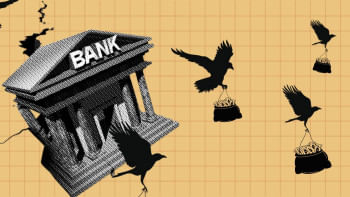
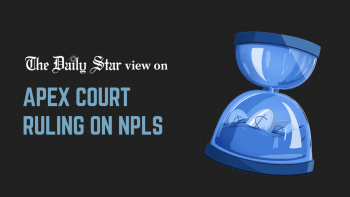
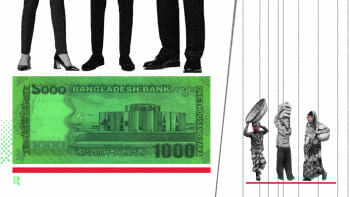



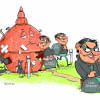

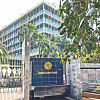
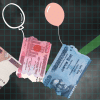

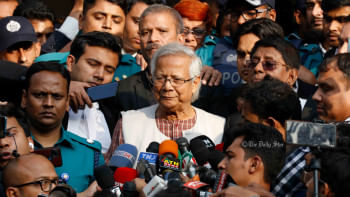

Comments